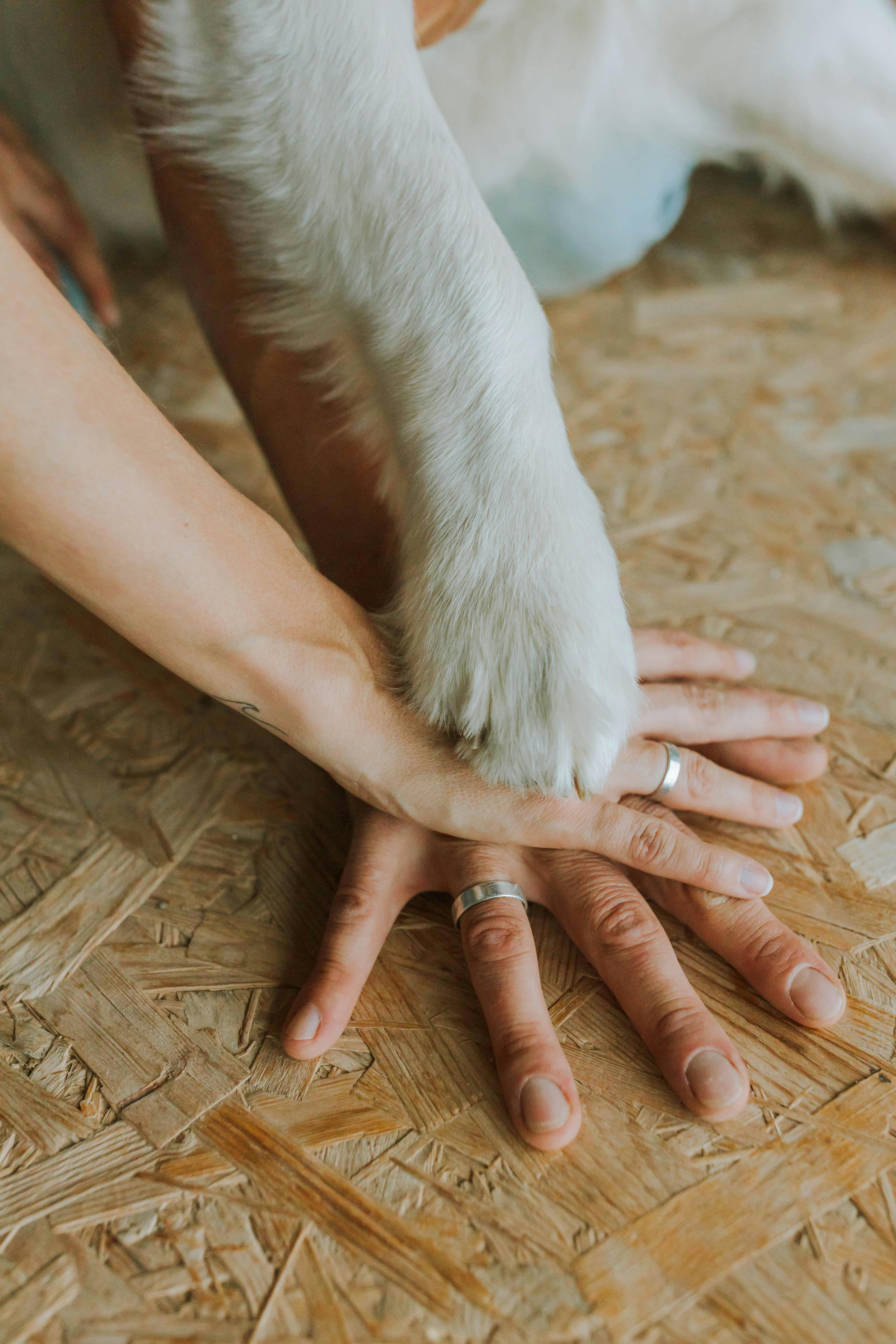Are you a dog owner tired of seeing your furry friend trembling and hiding during thunderstorms? If so, you're not alone. Many dogs suffer from a fear of thunder, and it can be distressing for both them and their owners. Luckily, there are effective strategies that can help alleviate this fear and provide comfort to your canine companion. By understanding the psychology behind a dog's fear of thunder and implementing proven techniques, you can help your dog feel more secure and less anxious during stormy weather. So let's explore these strategies to help your four-legged friend overcome their fear of thunder once and for all.
Understanding the Fear of Thunder in Dogs
Thunder phobia, also known as astraphobia or brontophobia, is a common fear among dogs that can cause them significant distress. It is important for dog owners to recognize the signs of thunder phobia and understand its causes in order to provide the necessary support and create a comfortable environment for their furry friends.
Signs of Thunder Phobia in Dogs
Dogs with thunder phobia may exhibit a variety of signs that indicate their fear and anxiety during thunderstorms. These signs can include trembling, panting, pacing, hiding, salivating, excessive barking, destructive behavior, and even attempts to escape. Some dogs may also display signs of aggression or self-injury as a result of their phobia. It is crucial to observe and identify these signs to better address the issue.
Causes of Fear of Thunder in Dogs
The fear of thunder in dogs can stem from various factors. One possible cause is a traumatic experience associated with a thunderstorm in the past. Dogs have a remarkable memory, so a negative event during a thunderstorm can leave a lasting impression. Additionally, dogs may have a genetic predisposition to anxiety or fear-based behaviors, making them more susceptible to develop a fear of thunder. Environmental factors, such as the dog's upbringing or exposure to loud noises during their critical socialization period, can also contribute to their phobia.
The Psychological Impact of Thunder Phobia
Thunder phobia can have a significant psychological impact on dogs, leading to long-term emotional distress. The fear and anxiety experienced during thunderstorms can trigger a fight-or-flight response, causing the release of stress hormones in the body. This can negatively affect a dog's overall well-being and potentially lead to the development of other behavioral issues. Understanding the psychological impact is crucial in finding effective strategies to help dogs overcome their fear of thunder.
Creating a Comfortable Environment for Thunder-Phobic Dogs
Creating a safe and comfortable environment for dogs during thunderstorms is essential to help alleviate their fear and anxiety. By implementing a few simple strategies, owners can significantly improve their furry companions' well-being during stormy weather.
Designated Safe Space for Dogs
Designating a safe space for your dog to retreat to during thunderstorms can provide them with a sense of security. This space should be in a quiet area of the house, away from windows and external noises. Ideally, it should be a familiar and comfortable space where your dog feels safe and protected. Consider using a crate or a specific room where your dog can go when they feel anxious.
Use of Soundproofing Materials
Soundproofing your dog's safe space or the areas of your home where they spend most of their time can help minimize the noise from thunderstorms. By reducing the intensity of the external sounds, you can help create a more peaceful environment for your thunder-phobic dog. You can use materials such as soundproof curtains, acoustic panels, or even insulation to dampen the sound and create a quieter atmosphere.
Implementing Calming Scents
Calming scents, such as lavender or chamomile, can have a soothing effect on dogs and help alleviate anxiety. Consider using essential oil diffusers or sprays in your dog's safe space or around the house during thunderstorms. However, it is important to note that some essential oils can be harmful to dogs, so always consult with a veterinarian to ensure the safe use of calming scents.

This image is property of images.pexels.com.
Gradual Desensitization Techniques for Dogs with Thunder Phobia
Introduction to Desensitization
Desensitization is a training technique that can be effective in helping dogs overcome their fear of thunder. It involves exposing the dog to the fear trigger in a controlled and gradual manner, allowing them to develop a more positive association with the stimulus over time. Desensitization should be done at a pace that is comfortable for the dog, ensuring that they remain relaxed and calm throughout the process.
Creating a Thunderstorm Recording
To initiate the desensitization process, it can be helpful to create a thunderstorm recording that mimics the sounds of a real thunderstorm. Start by playing the recording at a low volume while engaging in activities that your dog enjoys, such as playing with toys or receiving treats. The goal is to create positive associations with the sound of thunder, helping your dog develop a more relaxed response.
Gradual Exposure to Thunder Sounds
As your dog becomes more comfortable with the low volume thunderstorm recording, gradually increase the volume over time. It is crucial to progress at a pace that your dog is comfortable with, ensuring they remain relaxed throughout the process. If your dog shows signs of anxiety or distress, decrease the volume and revert to the previous step. Consistency and patience are key when using desensitization techniques.
Positive Reinforcement Training Methods
Positive reinforcement training methods can be highly effective in helping dogs with thunder phobia develop new, positive associations with thunderstorms. By rewarding calm behavior and using treats and toys as incentives, you can help your dog focus on positive experiences rather than their fear.
Counterconditioning with Treats and Toys
Counterconditioning involves pairing the fear trigger, in this case, the sound of thunder, with something the dog loves, such as treats or toys. Whenever a thunderstorm approaches or thunder sounds are heard, provide your dog with their favorite treats or engage in a play session with their preferred toy. This positive association helps shift their focus away from fear and toward the positive experiences they associate with thunderstorms.
Clicker Training for Anxious Dogs
Clicker training can also be beneficial in helping anxious dogs cope with their fear of thunder. The clicker serves as a marker to communicate to the dog that they have performed a desired behavior, followed by a reward. By using the clicker to mark moments of calm behavior during a thunderstorm, you can reinforce and encourage your dog to remain calm, eventually helping them overcome their fear.
Rewarding Calm Behavior
Consistently rewarding your dog for displaying calm behavior during thunderstorms is crucial in helping them manage their fear. As soon as your dog exhibits signs of relaxation, such as lying down quietly or focusing on an activity, provide praise, treats, or other rewards. By reinforcing calm behavior, you are reinforcing the idea that being calm and relaxed during thunderstorms is both safe and rewarding.

This image is property of images.pexels.com.
Seeking Professional Help for Dogs with Severe Thunder Phobia
For dogs with severe thunder phobia, it may be necessary to seek professional help to address their fear and anxiety effectively. Veterinary professionals, including veterinarians and veterinary behaviorists, have specialized knowledge and experience in treating behavior-related issues in dogs.
Consulting a Veterinarian or Veterinary Behaviorist
Consulting with a veterinarian or veterinary behaviorist is highly recommended for dogs with severe thunder phobia. These professionals can conduct a thorough assessment of your dog's behavior and provide guidance on the most effective management and treatment strategies. They may also recommend additional tests or interventions to rule out any underlying medical conditions contributing to your dog's fear.
Consideration of Medication Options
In some cases, medication may be prescribed to help dogs with severe thunder phobia cope with their anxiety. Medications such as anti-anxiety drugs or sedatives can be used to reduce fear and help dogs remain calm during thunderstorms. However, medications should always be prescribed and monitored by a veterinarian to ensure the safety and well-being of your dog.
Working with a Certified Dog Trainer
Certified dog trainers who specialize in behavior modification can also provide valuable assistance in helping dogs with thunder phobia. They have the knowledge and skills to implement effective training techniques and can guide you through the process of helping your dog overcome their fear. Working with a professional trainer ensures that you are using the most appropriate and safe methods for your dog's specific needs.
Using Anxiety Wraps and Thunder Shirts
Effectiveness of Anxiety Wraps
Anxiety wraps, such as Thundershirts or other similar products, can provide comfort and security for dogs during thunderstorms. These wraps apply gentle pressure to the dog's body, creating a sensation similar to being held or hugged. The pressure can help reduce anxiety and promote calmness in dogs. Many dog owners have reported positive results when using anxiety wraps for their thunder-phobic dogs.
Correct Usage of Thunder Shirts
When using anxiety wraps like Thundershirts, it is important to ensure proper fit and correct usage. Follow the manufacturer's instructions carefully to ensure the wrap is snug but not too tight, allowing your dog to move comfortably. It is also recommended to gradually introduce your dog to the wrap in a calm environment before using it during a thunderstorm. This helps your dog associate the wrap with positive experiences.
Alternative Calming Attire
If your dog is not comfortable with an anxiety wrap or Thunder Shirt, consider alternative calming attire, such as a snug-fitting body wrap or a specially designed calming vest. These alternatives work on similar principles of providing gentle pressure to promote relaxation. Each dog is unique, so it may be necessary to try different options to find the most effective calming attire for your thunder-phobic dog.

This image is property of images.pexels.com.
Natural Remedies and Calming Supplements
Exploring Herbal Remedies for Anxiety Relief
Herbal remedies can be considered as a complementary approach to managing anxiety in dogs with thunder phobia. Certain herbs, such as chamomile, valerian root, or passionflower, are known for their calming properties. However, it is important to consult with a veterinarian before introducing any herbal remedies to your dog's routine, as not all herbs are safe for dogs and proper dosages need to be determined.
Effectiveness of CBD Oil for Dogs
CBD oil has gained popularity as a potential remedy for anxiety in both humans and animals, including dogs. Derived from the cannabis plant, CBD oil is believed to have calming and anti-anxiety properties. Some dog owners have reported positive results when using CBD oil to help their thunder-phobic dogs manage their fear. However, it is crucial to consult with a veterinarian before using CBD oil, as proper dosages and potential interactions with other medications need to be considered.
Consideration of Nutritional Supplements
Certain nutritional supplements can also be beneficial in supporting a dog's overall well-being and reducing anxiety. Supplements such as L-theanine, melatonin, or chamomile extract may help promote relaxation and calmness. However, it is important to consult with a veterinarian before adding any supplements to your dog's diet, as individual needs and potential interactions with other medications should be taken into account.
Behavior Modification Techniques for Thunder-Phobic Dogs
Behavior modification techniques aim to change the emotional and behavioral response of dogs to thunderstorms through positive reinforcement and gradual exposure. When applied correctly and consistently, these techniques can help dogs develop new, more positive associations with thunder and overcome their fear.
Counterconditioning and Desensitization Combo
A combination of counterconditioning and desensitization techniques often yields the best results in behavior modification for thunder-phobic dogs. By gradually exposing the dog to the fear trigger and pairing it with positive reinforcement, you can help them build positive associations and reduce anxiety. Consistency, patience, and a slow progression are key when combining these techniques.
Systematic Desensitization of Fear Triggers
Systematic desensitization involves exposing the dog to fear triggers in a controlled and gradual manner to help them become desensitized. Start by exposing your dog to a mild version of the stimulus, such as a low-volume thunderstorm sound recording, and gradually increase the intensity over time as they become more comfortable. This gradual exposure helps the dog build tolerance and reduce fear.
Addressing Related Behavioral Issues
Thunder phobia can sometimes trigger or exacerbate other behavioral issues in dogs. For example, a dog with thunder phobia may develop separation anxiety or exhibit destructive behaviors due to the anxiety caused by thunderstorms. It is important to address these related behavioral issues as part of the overall management plan. Consult with a veterinarian or professional dog trainer to implement appropriate training and behavior modification techniques.
Maintenance of a Calm and Consistent Environment
Maintaining a calm and consistent environment for your dog is essential in helping them manage their fear of thunderstorms. By establishing routines, minimizing exposure to thunderstorms, and fostering a positive atmosphere, you can provide stability and reduce anxiety for your thunder-phobic dog.
Establishing Routines and Predictability
Dogs thrive on routine and predictability, as it provides them with a sense of security. During thunderstorms, try to maintain your dog's regular routines as much as possible. Stick to their usual feeding times, exercise routines, and play sessions. By providing a predictable environment, you can help your dog feel more secure and minimize the disruption caused by thunderstorms.
Minimizing Exposure to Thunderstorms
Whenever possible, try to minimize your dog's exposure to actual thunderstorms. If you know a storm is approaching, plan ahead to ensure your dog is in a safe and comfortable environment. Close windows and curtains to reduce noise and visual stimulation. Consider using white noise machines or calming music to help mask the sound of thunder. By minimizing exposure, you can help reduce your dog's anxiety levels.
Maintaining a Positive Atmosphere
Maintaining a positive atmosphere during thunderstorms is crucial in helping your dog feel more secure. Remain calm and composed, as dogs can pick up on their owner's emotions. Engage in activities that your dog enjoys, such as playing games or training sessions with treats. By providing positive distractions, you can help shift your dog's focus away from the fear of thunder and towards more positive experiences.
Ongoing Support and Monitoring
Helping your thunder-phobic dog overcome their fear is an ongoing process that requires continuous support and monitoring. Regular check-ins, adjustments to training and management plans, and access to supportive networks and resources are all important aspects of providing ongoing support for your dog.
Regular Check-Ins and Assessments
Schedule regular check-ins with your veterinarian or professional trainer to assess your dog's progress and make any necessary adjustments to the treatment plan. Thunder phobia can vary in its severity and progression, so regular assessments allow for early intervention and modifications to ensure effective management.
Adjustments to Training and Management Plans
As your dog progresses in their fear of thunder desensitization and behavior modification programs, it may be necessary to make adjustments to the training and management plans. Gradually increase the intensity or duration of desensitization exercises, and continue to provide positive reinforcement for calm behavior. Regular adjustments ensure that your dog continues to progress and overcome their fear effectively.
Supportive Networks and Resources
Joining supportive networks, such as online forums or local dog owner groups, can provide valuable resources and emotional support. Connecting with other dog owners who have dealt with or are currently dealing with thunder-phobic dogs can offer reassurance and helpful advice. Additionally, there are numerous books, articles, and professional resources available that provide further guidance on managing and treating thunder phobia in dogs.
In conclusion, understanding the fear of thunder in dogs is crucial in order to help them overcome this phobia and lead happier, less anxious lives. By creating a comfortable environment, utilizing desensitization and positive reinforcement training techniques, seeking professional help when needed, considering calming attire and natural remedies, implementing behavior modification techniques, maintaining a calm environment, and providing ongoing support and monitoring, dog owners can make a significant difference in helping their thunder-phobic dogs cope with their fears. With patience, consistency, and love, it is possible to alleviate thunder phobia and improve the well-being of our beloved furry companions.


